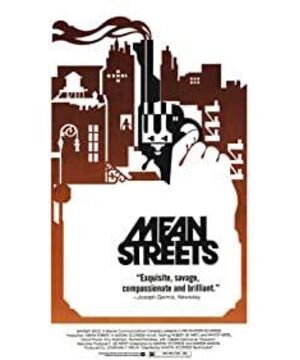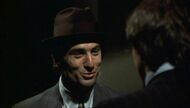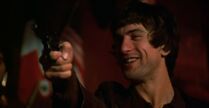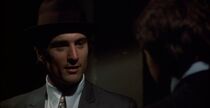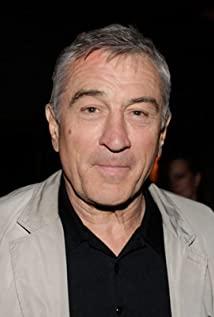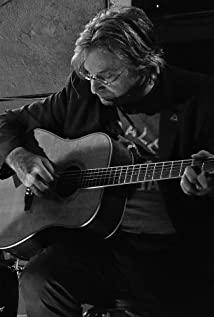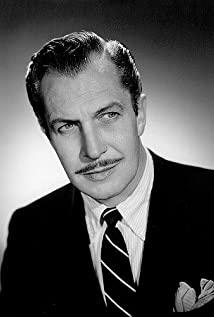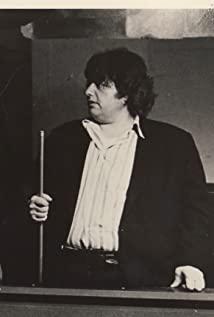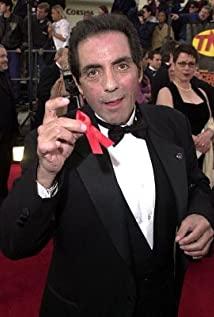After "Poor Streets" came out in 1973, although it did not sell well-some commented that it was because the film was "too dull"-but it did not prevent it from participating in the New York Film Festival and the Cannes Film Festival's "Directors' Fortnight" screenings. . However, its brilliance was quickly obscured by "Taxi Driver" three years later. Afterwards, in works on Martin Scorsese or Robert De Niro, "Poor Streets" mostly became "Taxi Cars". A prelude to "The Driver".
It cannot be said that this view is unreasonable. From the perspective of visual style and cultural connotation, the two films do have the same origin, but they still have a big difference. That is, "Taxi Driver" more clearly vents the United States in the 1960s. The phenomenon of human mental breakdown and the resulting worship of violence. Although "Poor Streets" also involves this "black spirit" phenomenon, it is more of the Scorsese racial culture video series. On one page, the motivation for it not only comes from Scorsese’s cultural critical spirit of American society, but also from his own Italian-American racial complex.
Like other famous works by Scorsese, such as his first feature film "Who is Knocking on My Door" (1969), "Angry Bull" (1980), "Good Partner" (1990), etc., "Poor Street" The protagonists of "The Back Alley" all live in "Little Italy" in the Lower East Side of Manhattan, New York. The protagonists of the film, Charlie and others, are all second-generation Italian-Americans, and their behavior and conversation are in addition to the characteristics of ordinary young Americans in the lower class. , And even more marked by the unique community culture of the Italian-American residential area. Scorsese has lived in such a community environment since he was a child. Such ethnic background has cultivated and influenced the values, social and religious views of Scorsese, and also provided unique themes and performance objects for his creation (in this He surpassed Coppola, who is also of Italian origin.) In order to realize his dream of ethnic culture on the screen, he even organized a long-term cooperation team with Robert De Niro, Harvey Keitel and others. The "home-style" production method itself can also be said to be very "Italian".
Before and after the filming of "Poor Streets", "The Godfather" and its sequels were born. They also showed Italian-Americans, but their focus was different. If the Corleone family in "The Godfather" embodies the powerful Italian power in the American Mafia, then "Poor Streets" cannot be regarded as a "mafia movie" at all, compared with the Mafia family in "The Godfather" Come up, the things Charlie, Jonny and others did in "Poor Streets" are not worth mentioning. Scorsese didn't want to expose the Mafia in "Poor Streets", and he had a complex feeling of love and hatred for Charlie, who lived at the bottom of the white minority youths. The poverty of material and spirit, the low social status, the lack of anger and emotion, just as Scorsese later described such people in the original "The Insider" of "The Good Partner": "They were born without success. Hope", "They don't have all the necessary skills to realize their dreams, except for one thing, they can fight or kill." In "Poor Streets", Charlie, Jonny, Tony and others do some money-robbing, extortion, and thugs. It is not so much for money or a conscious and passive resistance to the existing system. It is more of a kind of opposition to the surroundings. Blind destruction of all things venting. The film does not have many coherent plots (it just uses Michael to collect debts from Jonny as an opportunity for the conflict). It shows a lot of the almost unfounded mischief of Charlie and others in the alleys of the bar and ballroom. The most shocking thing in the film is this. Point: These young people do bad things simply "for no reason, do whatever they want" (American film critic Bar Palis). They regard fighting and provocation as commonplace. There are several places in the film that the three of them are fighting with others for some very small things, but it can also be said to stop and stop, like a commonplace, ridiculous and sad. This blind admiration of violence is especially reflected in Jonny. Compared to his companions, Jonny is more aggressive, irritable, arrogant and combative, but Scorsese still makes him drunk shortly after the beginning of the film but it is sad. He sang: "I was born in a broken house in a storm." Scorsese recalled the "Little Italy" of his childhood life. He always believed that there was no "good guy and bad guy" there. Those who joined the "gang" did not join. There is no difference. This is not to say that he did not criticize the behavior of the characters in his works. In his view, it is not themselves who are responsible for the degeneration of these minority youths, but the environment in which they live. Scorsese believes that "Poor Streets" is also a story about the "American Dream". Charlie and the others wanted to join the social group, but they were not accepted, so they resorted to illegal means, and all of these were the same. The ethnic background is related. Scorsese on the characters in the film His attitude is most clearly shown in the fate of the characters at the end of the film. He didn't let them die, but just got punished. In his opinion, their life or death is not important anymore. These people have been struggling with death while alive. Death is not a particularly painful experience for them. To live is to die. After Jonny was injured, it was torn. The howl like a heart-cracked lung is as terrifying as it is from hell.
Compatible with the film’s performance on ethnic and cultural issues is the film’s attitude towards religion. Scorsese’s films about Italian-Americans almost without exception express his own dual attitude towards religion, that is, on the one hand, as a descendant of Italians, he is influenced by the Catholic doctrine and the resulting religious attitude. Religion, on the other hand, is the deep feeling that religion can't save the characters' real suffering, so that they are trapped in deep contradictions. At the beginning of "Poor Streets" in a small room under the blue light, Charlie lay facing the wall, and the voice-over sounded "You will pay for your sins on the street or at home, but you can't do that in the church." This is the contradiction of Charlie. The biggest difference between Charlie and his partner is not in his religious piety, but in his desire to be an educated and respectable person in accordance with the doctrine. Tony and Tereza satirized him face to face. Therefore, the appearance of Charlie's prayers in the church and the religious rituals of the people in the "Little Italy" area (such as the large cross made with torches or light bulbs) has a certain objective effect of irony. Cha ideal cleans up his body, but he also acts as a mafia uncle's minion, forcing him to force debts and even seize people's territory for his own possession; he wants to save Jonny, but Jonny is unwilling to do so, and he even gets in (in the film) Charlie is both a debt collector and another debtor); he loves Teresa, but he has to listen to his uncle’s words to cut off contact with her for his own future... The contradiction between Charlie’s faith and reality is in the film There was a hint at the beginning: the voice-over about paying the price for sin on the street instead of in the church was interrupted by the sound of police cars from far and near. Similar treatments such as every scene of Charlie in the church are always followed by violence and filthy behavior, and the two form a sharp contrast. In fact, looking at all of Scorsese’s works so far, although he is deeply influenced by Catholicism, he has never advocated the institutional status of Catholicism. "The Last Temptation of Christ"), the protagonist in his film desires to use religion to save the sick society and the individual, but often fails.
Like other important works of Scorsese, "Poor Streets" has the author's personal style characteristics, or more precisely, in view of the status of "Poor Streets" as Scorsese's early works, it participates in Scorsese The creation of his personal style provides the identification mark of Scorsese's films.
It was from this film that Robert De Niro became Scorsese's most important collaborator. He played Jonny full of passion and explosive power. Charlie played by Harvey Keitel has also become a typical in Scorsese films, that is, a lonely man. He is confused by Johnny-type characters, but wants to get rid of it. As a result, his conscience is blamed and his future is destroy. "Poor Streets" also established the characteristics of Scorsese's later films in the image style, that is, a certain "black style", which is not a genre (Speaking of genres, the contribution of "Poor Streets" is probably to create A kind of "urban street film"), it refers more to the visual style, the visual style determined by the tone and emotion. The film is full of dark scenes of perilous city streets, and nightmare-like scenes constitute a hellish picture. Of course, its "black" image is not as strong as "Taxi Driver" three years later, but the basic tone is the same. Judging from the specific scenes, "Poor Streets and Back Alleys" has more interior scenes, especially the interior scenes of bars. The blood-red color, dim lights, and drunk people create a doomsday atmosphere. "Poor Streets" also has outstanding examples of Scorsese's use of sound to match the pictures, such as a group of shots of Charlie drunk in a bar, the picture is a close-up of his deformed face, he is drinking glass after glass, and the background is endless Shaking, the voice-over is a neurotic singing, as if a phonograph is playing a faulty record, singing the same phrase over and over again, grotesque and harsh, this voice can be both objective and subjective (unconscious Charlie I hear it in my ears). In "Poor Streets", Scorsese shows his habit of using techniques, such as the extensive use of rhythmic rock music, incoherent dialogue between characters, sports photography with variable angles, and always making the audience feel uneasy. Editing strategy.
These techniques constitute the overall aesthetic style of Scorsese, as the American film critic Robert Kolker said: “The films of Scorsese make two opposing film forms-documentary and fictional-one of them. There is a tension between them. One side of the record seems to be objectively observing people, places, and events; the other side requires the subjectivity of the viewpoint, which is so strong in Scorsese’s films that the whole world becomes an expression. It’s ideological.” The mystery here is that Scorsese is good at borrowing the viewpoint of the character to express his viewpoint, achieving the dual effect of a viewpoint. In this way, while presenting to the audience what he is obsessed with, he also gives the audience a strong sense of reality. The processing of a large number of street and bar scenes in "Poor Streets" has such an effect. Because it only took a week in New York, the entire crew went to Los Angeles. This kind of realism should be said to be amazing. Of course, as Scorsese regrets, if the time in New York is longer, this effect will be even stronger.
View more about Mean Streets reviews


